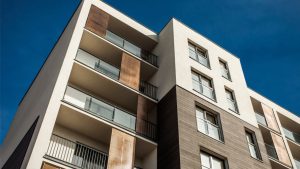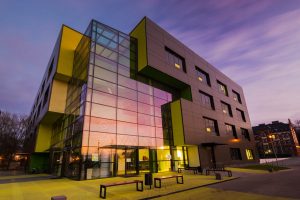In the ever-evolving world of architecture, sustainability has become a central focus. The quest to balance ecological responsibility with innovative design is not just a trend but a necessity. As we face global challenges such as climate change and resource scarcity, sustainable architecture emerges as a beacon of hope and transformation. This article delves into the heart of sustainable architecture, exploring its principles, innovations, and impact on the future of building design.
The Essence of Sustainable Architecture
Sustainable architecture is a holistic approach that seeks to minimise the environmental impact of buildings. It encompasses various aspects, including energy efficiency, use of sustainable materials, water conservation, and improving indoor environmental quality. The core aim is to create structures that are in harmony with their surroundings, serve the needs of their occupants healthily and efficiently, and have a reduced carbon footprint.
Key Principles
- Energy Efficiency: Utilising design elements and technologies that reduce energy consumption.
- Sustainable Materials: Choosing construction materials that are renewable, recyclable, and have low environmental impact.
- Water Conservation: Implementing systems for efficient water use and recycling.
- Indoor Environmental Quality: Ensuring good air quality, natural light, and thermal comfort.
Innovation in Sustainable Architecture
The world of sustainable architecture is ripe with innovation. Architects and designers are continually pushing the boundaries to create buildings that are not only environmentally friendly but also aesthetically pleasing and functionally superior.
Cutting-edge Technologies
- Solar Power Integration: Advanced solar panels and photovoltaic systems are seamlessly integrated into building designs, providing clean energy.
- Green Roofs and Walls: These living systems offer insulation, reduce heat island effect, and enhance biodiversity.
- Smart Building Systems: Intelligent systems that optimise energy use, control lighting, heating, and cooling based on occupancy and external conditions.
Materials of the Future
- Bamboo: A rapidly renewable resource that is strong, versatile, and has a low carbon footprint.
- Recycled and Upcycled Materials: Utilising materials that would otherwise be waste, such as recycled glass or upcycled wood, in innovative ways.
- Hempcrete: A lightweight, biodegradable material made from hemp fibres that is an excellent insulator and carbon sink.
Sustainable Architecture in Practice
The practical application of sustainable architecture principles can be seen in numerous exemplary projects around the world. These projects not
only showcase the potential of sustainable design but also serve as a blueprint for future developments.
Case Studies
- The Edge, Amsterdam: Dubbed as the ‘world’s greenest office building’, The Edge utilises a vast array of solar panels, rainwater harvesting systems, and an intelligent building management system that maximises energy efficiency.
- Bullitt Center, Seattle: Often referred to as the ‘greenest commercial building’ in the world, it is entirely self-sufficient in water and energy, featuring a solar roof, composting toilets, and a rainwater collection system.
- Bosco Verticale, Milan: These residential towers are an excellent example of vertical forests. They integrate thousands of plants and trees into their facades, improving air quality, promoting biodiversity, and reducing urban heat.
The Role of Architects in Sustainable Development
Architects play a crucial role in the sustainable development movement. They are not just designers of spaces but shapers of ecosystems. Their responsibility extends beyond the aesthetic and functional aspects of a building to its environmental impact and contribution to societal well-being.
Responsibilities of Architects
- Innovative Design: Architects must continually seek new ways to integrate sustainable practices into their designs.
- Education and Advocacy: They should educate clients and the public about the benefits of sustainable architecture and advocate for green building practices.
- Collaboration: Working alongside engineers, environmentalists, and urban planners to create comprehensive sustainable solutions.
Challenges and Future Directions
While sustainable architecture is gaining momentum, there are still challenges that need to be addressed.
Challenges
- Cost Concerns: Initially, sustainable buildings can be more expensive due to the cost of green materials and technologies.
- Regulatory Barriers: Inconsistent regulations and building codes can hinder the adoption of sustainable practices.
- Technical Knowledge: There is a need for more widespread technical knowledge and expertise in sustainable design among professionals.
Future Directions
- Holistic Sustainability: Moving beyond just environmental aspects to include social and economic sustainability in design.
- Innovative Materials and Technologies: Continued research and development into new sustainable materials and technologies.
- Integrated Urban Planning: Incorporating sustainable architecture into broader urban planning and development.
Conclusion
Sustainable architecture is not just a concept for the future; it is a necessary evolution of the present. As we face environmental challenges, architects and designers are tasked with creating spaces that not only serve human needs but also respect and enhance the natural environment. Sustainable architecture is a journey, not a destination, and every step taken in this direction is a step towards a more harmonious and sustainable future.
Innovating for the future requires a balance between practicality and imagination. By embracing sustainable principles and pushing the boundaries of design and technology, we can create buildings that not only serve our immediate needs but also contribute positively to our planet’s health and future generations.






